These Scenic Train Trips Through West Virginia Have Spectacular Mountain Views and Fine Dining on the Rails
West Virginia is a haven for scenic train rides — and one travel writer sampled the steam trains on offer to find the best trips.
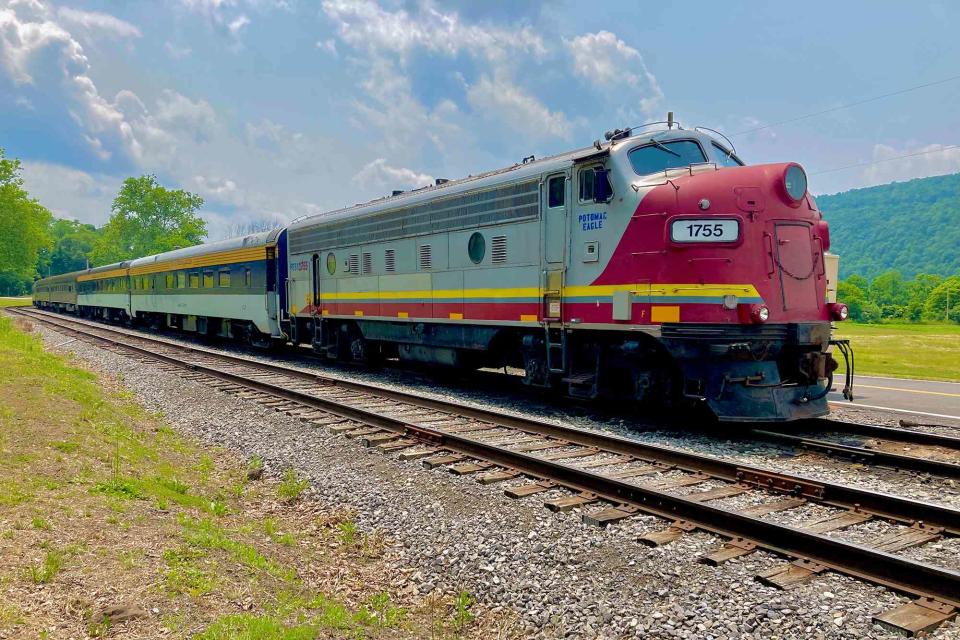
Mark Orwoll/Travel + Leisure
I’ve been looking forward to a glass of wine in an elegant train car. I’ve even brought along a bottle of wine in my knapsack, just in case you have to bring your own. Unfortunately, at the last minute, I discover that West Virginia's Potomac Eagle Scenic Railroad serves no alcohol on its cocktail-hour excursion. Not even BYOB.
Departing from Romney, West Virginia’s oldest town, the Potomac Eagle gets its name from its route along the South Branch of the Potomac River and the abundance of eagles there. That’s especially true in the high-walled, thickly forested canyon called the Trough, so named by George Washington on a 1748 surveying expedition. I'm on the Sunset Trough trip, a three-hour ride that, according to my research, offers "eagle sightings in a soft canyon glow."
The train has two engines, one at either end. Pulling us on the first leg of the journey through West Virginia's Trough Canyon is the Potomac Eagle 8250, an ungainly-looking, hard-working diesel road switcher built in 1955 for the Canadian Pacific Railway. Hauling us home on the opposite end is the powerful, photogenic 1755, which was used as a prop in the 2023 Tom Hanks film "A Man Called Otto." On both trains are coaches, dining cars, and even an open-air gondola, or what railroaders simply call a "gon," for those who want a wide view of the Trough and its eagles.
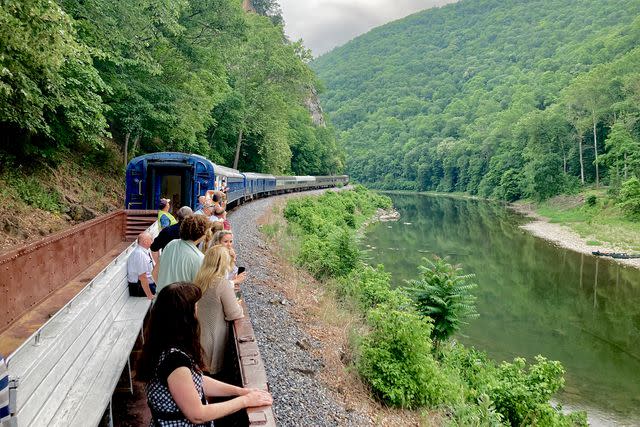
Mark Orwoll/Travel + Leisure
Meal service begins shortly after our 5 p.m. departure. Based on ticket class (and price), the food ranges from snack-bar items to a four-course dinner prepared on the train. The railroad has new owners, who are not only angling for an alcohol license (expected soon), but have invested heavily in the onboard cuisine.
“We do all the food preparation and cooking right here on the train,” says Gretta Ramsey, the line’s food and beverage manager, “which is important if you want to present a high level of meals. We’ve been able to upgrade the menu with more choices, more local food items, and in general, higher-quality ingredients.”
At a brief stop just before entering the Trough, guests can leave their assigned cars and move to the open gon. But with rain threatening, not everyone wants to. Too bad, because no sooner do we enter the Trough than an eagle dive-bombs from high above us to inches over the water’s surface. Another eagle does an Icarus over the canyon until it’s out of sight. Two eaglet siblings, barely fledged, cautiously pump their wings above the river, then return to their nest.
We’re lucky to have Robert “BJ” Lefever on this train. Lefever is an eagle spotter. He knows their nests, predation patterns, and how to find them in treetops, even surrounded by hundreds of identical treetops. Standing in the open gon, he shouts out the location of each bird so loudly that his voice often cracks. In less than five minutes in the Trough, we sight six eagles, with more to come. And Lefever is always the first to spot them.
“They call me ‘eagle-eye’ around here,” he says with a laugh.
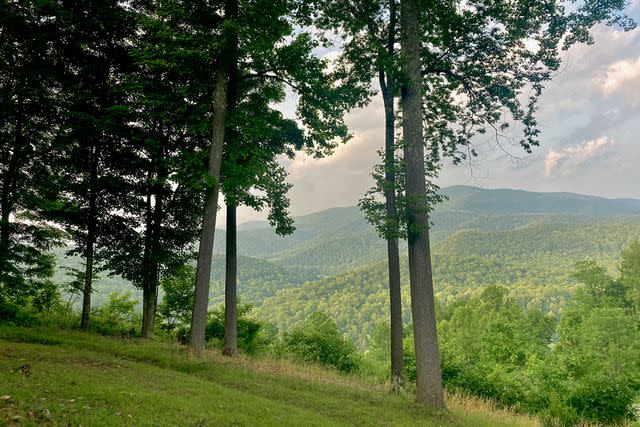
Mark Orwoll/Travel + Leisure
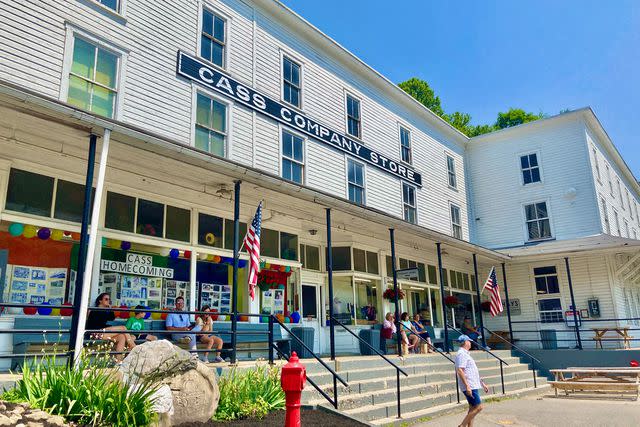
Mark Orwoll/Travel + Leisure
The next day, I sampled a different scenic train of West Virginia. In the tiny town of Cass, 110 miles from Romney, Cass Scenic Railroad State Park is holding its annual Parade of Steam when I arrive. The railroad rolls out all five of its Shay steam locomotives, tooting their whistles, chuffing black coal smoke, and fuming chutes of white steam through its piston valves and exhaust ports. The Parade of Steam is a veritable Miss America pageant of the Iron Horse.
The scene, when I arrive, is heart-stopping in its magnificence. These locomotives, weighing between 40 and 154 tons, are formidable beasts, loud and oily and reeking of burnt coal. Ash and embers fly through the air, leaving the bystanders blinking and rubbing their eyes. Engine grease soils the tracks. The noise is ungodly, ear-splitting. Water drips from the undersides of the locomotive boilers, leaving muddy paths alongside the wheels.
It is, in other words, spectacular.
Watching it all is visitor Patrick Tabor, a miner in a rock quarry near Roanoke, Virginia, three hours away.
“I’ve always been a railfan,” he tells me. He’s booked on two rides this weekend. “I grew up where there’s lots of railroad history. I especially like the steam trains.”
Another visitor, Nathan Watson, was originally from Cass, so he’s familiar with the steam locomotives and their sorrowful whistles resounding among the valleys.
“My grandpa was a brakeman here,” he says, “and lived across the river. I used to bum rides on the trains when I was a kid. I just love ’em.”
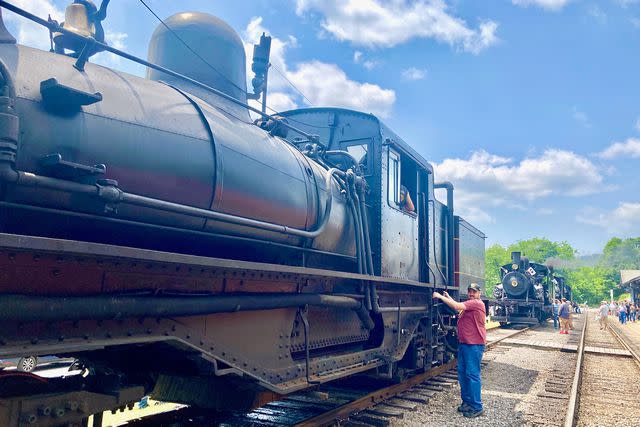
Mark Orwoll/Travel + Leisure
The railroad started in 1901 to carry timber down from the mountains to the Cass mill built by the West Virginia Pulp and Paper Co. The grades are steep, as much as 9 percent, so the company used Shay locomotives, a revolutionary design that relies on geared wheels and which improves the traction. The lumber and mill business ended in 1960, and West Virginia’s state park system bought the rolling stock, engines, and right of way soon after. Tourist excursions began in 1963.
At the ticket office, a sign above the guichet says, “Special Rides Today.” When I inquire, the woman behind the grillwork says they have hour-long steam-driven rides in old parlor cars along the Greenbrier River, the next one leaving in 15 minutes. I unhesitatingly pay 30 bucks and quickly find passenger car 3607 on the train, make my way to my assigned four-person table, and take seat A, a window perch on the left side of the car.
Our train follows the Greenbrier Branch right of way of the former C&O Railroad, which back in the day would send trains to Cass to pick up milled lumber and bring it to market on the mainline. As it turns out, we are riding on a slightly abbreviated version of Cass Scenic Railroad’s newest itinerary, the Greenbrier Express, using the same cars and steam locomotives.
The Greenbrier River Valley is teeming with wildlife. Passengers may spy mergansers and mallards, deer, and even black bears. On this day, we see all those things and more, except for the bears. The shallow river, 30 feet broad, takes up most of the valley floor, leaving the train clinging to a steep hillside. The steam whistle echoes lugubriously among the slopes. Photogenic cascades froth down the sides of the hills, passing below our tracks and flowing into the river.
The rolling stock behind our locomotive includes a coal car, U.S. Mail Rail Post Office 706, West Virginia Central diner 202, Western Maryland Railroad passenger cars 3607 and 835, and Chesapeake & Ohio caboose 90658. Despite the mismatched cars, it is one hell of a handsome train.
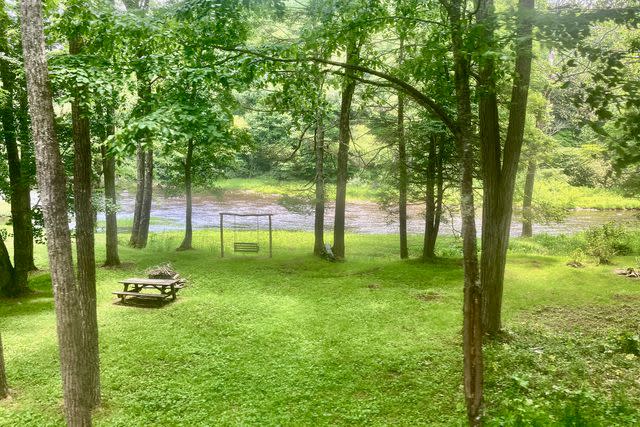
Mark Orwoll/Travel + Leisure
The next day, I find myself again in Cass. I’ll stay overnight in one of the former Cass Company houses, built for the mill and railroad workers in the early 1900s and now available for rent. But at the moment, the big event is one the most scenic rail journeys in the country: the ride to Bald Knob, the third highest peak in West Virginia, on the Cass Scenic Railroad.
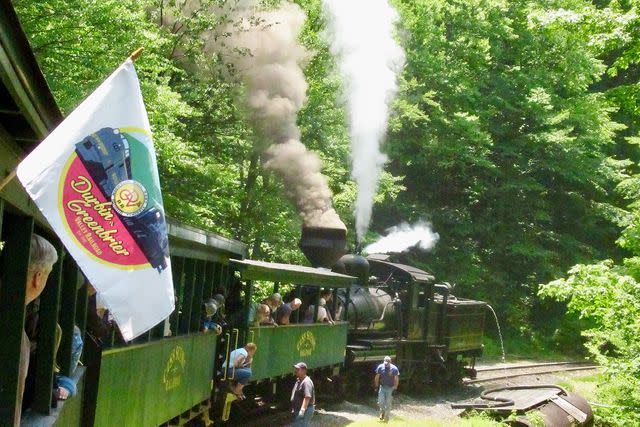
Mark Orwoll/Travel + Leisure
As we board at the Cass station, each passenger receives a plastic bag containing a “hobo lunch” (hamburger bun, cold cuts and cheese, macaroni salad, cookies, apple sauce, and bottled water). Some of the passengers dig into the chow right away, while others hang onto it, waiting until we reach Bald Knob, two hours up the mountain.
Our engine, Shay No. 11, was built by the Lima Locomotive Works of Ohio in 1923. The Shays were designed for power and grip, not for speed. They can reach 11 mph if called upon, but average only about 6 mph on most trips.
The rolling stock on the Bald Knob excursion consists mainly of gondolas once used to carry cut trees to the mill. The state park put roofs over the cars and double-sided wooden bench seats lengthwise down the centers. Some far-thinking passengers have brought light jackets, in case the weather turns cold on the mountaintop, and which they use as seat cushions for the five-hour round-trip ride.
Our climb begins at an elevation of 2,452 feet; the summit, 11 miles away, is at 4,842 feet. Not every steam locomotive can make such a climb, especially considering the curves we have to contend with.
We come to a switch, where we reverse direction onto a new set of tracks. Our locomotive, which had been pushing us, is now pulling us. Coal smoke unexpectedly flows back into the open passenger cars. The train crew advises us to squint and look away if a cloud of smoke comes at us. Eyewash is available for anyone who needs it. Many do.
We pass three grand vistas where the tracks are higher than the treetops on the downslope side. Range after range of mountains come into view, fading from forest green to powder blue on the far horizon. The timberlands here are rich and varied: maple, oak, beech, birch, mountain ash, and the placer gold of timber, red spruce, prized by the lumber mills for its grain, strength, and beauty.
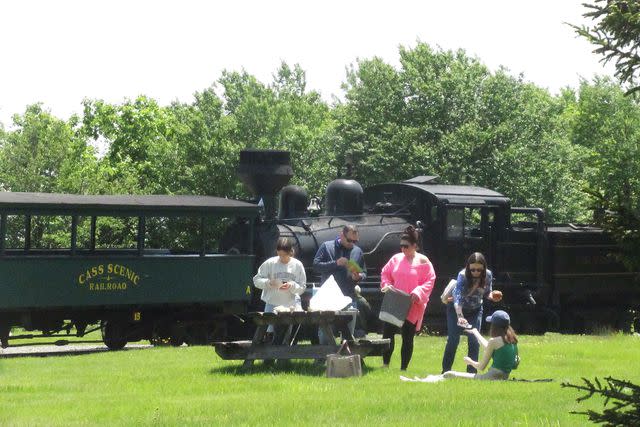
Mark Orwoll/Travel + Leisure
Finally, we pull into Bald Knob, two hours from Cass. Picnic tables are scattered about a vast meadow. From down in the valley, I can hear the high, lonesome whistle of another Shay, a sound at once joyous and mournful.
I take a seat by myself at one of the picnic tables and look into my day pack to see if any of my hobo lunch remains. Imagine my surprise when I open the pack and find the bottle of wine I’d bought days earlier and failed to use as a BYOB on the Potomac Eagle. I also discover a Par Mar gas station 16-ounce paper coffee cup (“Buy this size and save up to 1¢ per gallon”), which I’d picked up that morning. What are the odds?
No alcohol is allowed here or anywhere else in the state park. Yet high atop the knob, surrounded by dramatic and distant views of the wild mountains of West Virginia, I can’t resist. I open the wine, fill the coffee cup halfway, and raise a surreptitious toast to railroads everywhere, the older the better.
For more Travel & Leisure news, make sure to sign up for our newsletter!
Read the original article on Travel & Leisure.

